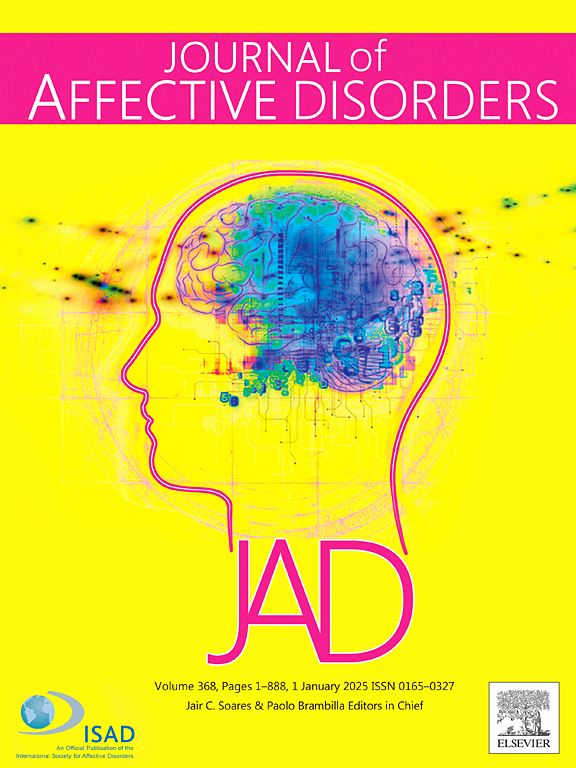A sport-for-protection program reduces anxiety and depression in youth affected by displacement: A randomized controlled trial of the Game Connect program in Uganda
IF 4.9
2区 医学
Q1 CLINICAL NEUROLOGY
引用次数: 0
Abstract
Introduction
Youth affected by displacement are at risk for anxiety and depression. Supervised sport programs are a potentially effective strategy, however trials from displacement contexts are lacking.
Methods
Displaced youth and youth from host communities in five humanitarian settings across Uganda aged 15 to 24 years, and with at least mild anxiety and/or depression, were randomized to a 16-week sport-for-protection program or a wait-list control condition. The Generalized Anxiety Disorder-7 (GAD-7) and Patient Health Questionnaire-9, adolescent version (PHQ-9-A) were assessed pre- and post-intervention. Linear mixed modelling was conducted.
Results
834 young people were randomized (421 in the experimental and 413 in the control condition; median age = 19.0 years; 46.9 % boys; 14.7 % with self-reported or observed disability; 29.5 % from host community and 70.5 % displaced youth). Large effect sizes were found for the anxiolytic (Cohen d = 1.21, 95%CI = 1.06–1.36) and antidepressant (Cohen d = 1.32, 95%CI = 1.17–1.47) effects of sport-for-protection in comparison with a wait-list control condition. In subgroup analyses, large effect sizes were observed in displaced youth (Cohen d GAD-7 = 1.15, 95%CI = 1.0–1.32; Cohen d PHQ-9-A = 1.33, 95%CI = 1.16–1.51) and youth from host communities (Cohen d GAD-7 = 1.34, 95%CI = 1.06–1.61; Cohen d PHQ-9-A = 1.30, 95%CI = 1.03–1.58); in boys (Cohen d GAD-7 = 1.23, 95%CI = 1.03–1.43; Cohen d PHQ-9-A = 1.36, 95%CI = 1.14–1.58) and girls (Cohen d GAD-7 = 1.11, 95%CI = 0.89–1.33; Cohen d PHQ-9-A = 1.26, 95%CI = 1.05–1.47); and in those with (Cohen d GAD-7 = 0.99, 95%CI = 0.61–1.37.; Cohen d PHQ-9-A = 1.53, 95%CI = 1.12–1.94) and without disability (Cohen d GAD-7 = 1.24, 95%CI = 1.08–1.49; Cohen d PHQ-9-A = 1.28, 95%CI = 1.12–1.44).
Conclusion
Sport-for-protection is an effective stand-alone or adjunctive intervention to reduce symptoms of anxiety and depression among young people affected by displacement within humanitarian settings.
求助全文
约1分钟内获得全文
求助全文
来源期刊

Journal of affective disorders
医学-精神病学
CiteScore
10.90
自引率
6.10%
发文量
1319
审稿时长
9.3 weeks
期刊介绍:
The Journal of Affective Disorders publishes papers concerned with affective disorders in the widest sense: depression, mania, mood spectrum, emotions and personality, anxiety and stress. It is interdisciplinary and aims to bring together different approaches for a diverse readership. Top quality papers will be accepted dealing with any aspect of affective disorders, including neuroimaging, cognitive neurosciences, genetics, molecular biology, experimental and clinical neurosciences, pharmacology, neuroimmunoendocrinology, intervention and treatment trials.
 求助内容:
求助内容: 应助结果提醒方式:
应助结果提醒方式:


